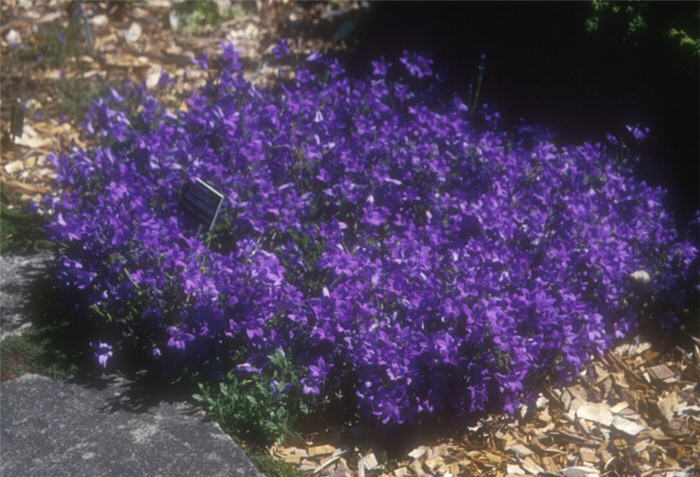| Botanical Name: Campanula portenschlagiana | |
| Common Name: Dalmatian Bellflower |

-
Anatomy
-
Culture
-
Design
Plant Type
Perennial
Height Range
Under 1'
Flower Color
Blue, Violet
Flower Season
Summer, Fall
Leaf Color
Green, Dark Green
Bark Color
n/a
Fruit Color
n/a
Fruit Season
n/a
Sun
Full, Half
Water
Low, Medium
Growth Rate
Moderate
Soil Type
Sandy, Clay, Loam, Rocky, Unparticular
Soil Condition
Average, Rich, Well-drained, Dry
Soil pH
Neutral
Adverse Factors
n/a
Design Styles
English Cottage, Formal, Japanese, Meadow, Mediterranean, Ranch, Woodland
Accenting Features
Showy Flowers
Seasonal Interest
Summer, Fall
Location Uses
Entry, Perennial Border, Parking Strip, Patio, Raised Planter, Walkways, With Rocks
Special Uses
Container, Mass Planting, Small Spaces
Attracts Wildlife
n/a
Information by: Stephanie Duer
Photographer:
Photographer:
-
Description
-
Notes
Dalmatian bellflower is a mat forming perennial, growing about 6 to 12 inches tall, and 1 to 2 feet wide (though in time, it may spread wider). It has finely textured, dark green leaves that are covered by purple-blue, open bell-shaped flowers mid- to late summer. This bellflower tolerates drier soils and more shade than some of the others, and so is a fine addition to shadier, but drier rock gardens, the edges of perennial borders, and parkstrips.
Grow in full sun to part shade, in well drained, loamy garden soil. Manages with very little water when sheltered from mid day sun. After blooming, you can snip away about a third of the plant, if you'd like a tidier appearance. Otherwise, cut back in late winter to early spring, as new growth emerges.